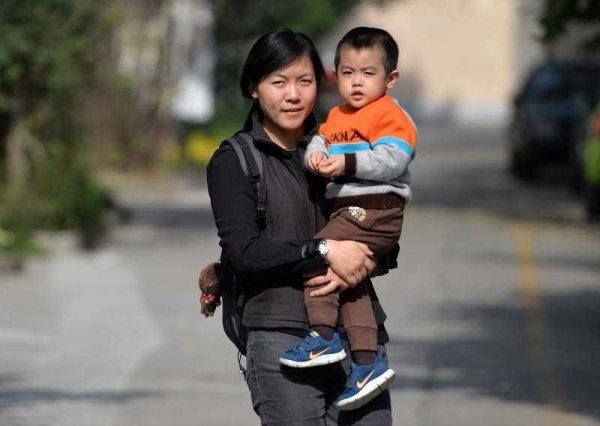China’s economic growth has been slowing down considerably. Forecasting economic growth into the future is an inexact science. Simply extrapolating past trends is unlikely to give accurate predictions, especially if it does not take into account the different stages of development through which economies move. Studies that take account of ‘catchup’ growth and benchmark China to the experience of other East Asian nations suggest that China still has the potential to grow quickly. But this sort of analysis does not allow us to examine the deeper structural factors that influence the growth rate.
In China’s case, the specifics of the demographic transition now underway must be considered. For instance, if we use the peak working-age population and the turning point of the dependency ratio (which measures how many non-working-age people there are for every working-age person) as a benchmark, China is where Japan was in the early 1990s. Thereafter, Japan’s annual average GDP growth has been less than 1 per cent.
In the early days of the reform period, China’s family planning policies accelerated the process of demographic transition by increasing the working-age population and lowering the dependency ratio: the so-called ‘demographic dividend’. Under China’s ‘one-child’ policy China’s total fertility rate — that is, the number of children an average woman has in her life — has dropped to 1.4, well below the rate required to keep the population stable. This policy has stabilised the population, and delivered an unprecedented sizeable growth dividend. But China’s working-age population peaked in 2010, and the population dependency ratio has begun to increase.
A significant portion of the unprecedented economic growth in China over the past 30 years — as much as one-quarter of all growth — can be attributed to the demographic dividend. Two mechanisms behind this phenomenon are the lower dependency ratio, which leads to a higher rate of capital formation, and the fast growth in the working-age population, which leads to a higher labour supply. Both of these are contributing to higher economic growth.
But the reversal of demographic trends means that China’s traditional growth model will become unsustainable. At current fertility rates, the contribution of the demographic dividend to growth will be close to zero in the next few years. And after 2020 demography will impose a burden, rather than a boost, to growth.
So what can be done?
Broadly speaking, possible reform measures can be classified into two categories. The first would aim at prolonging the demographic dividend. The second would seek to improve China’s productivity performance.
China’s total fertility rate is certainly low. And, at 1.4 children per woman, it is close to the ‘low fertility trap’ level of 1.3 children per woman below which it has historically been impossible for countries to return to replacement levels of fertility. Fertility can be increased by relaxing China’s family planning policy. But China’s new policy — where a family in which either parent is an only child is permitted to have a second child — has had only a limited effect on fertility. Relaxing policy on family size will generate different short-term and long-term growth effects, lowering growth in the short term and raising it in the long term. China should move sooner rather than later to an unrestricted ‘two child policy’.
Raising the retirement age could also put off China’s demographic headwinds. But this is unlikely to have a very strong or a long-lasting impact on China’s potential growth. Increasing educational attainment could yield a moderately large dividend: one additional year of schooling on average for Chinese citizens would lift China’s potential growth rate from 6.6 to 7.5 per cent from 2016 to 2020. But the impact of this would tail off over time. Increasing the quality of education could also have significant impacts on growth potential.
But the real potential for sustaining Chinese growth is in improving productivity. In many sectors, technology has yet to catch up to the level of the advanced economies. And given the large disparities in productivity among firms within sectors, there should be regulatory reform to make it easier for workers and capital to shift from low-productivity firms to high-productivity firms. This would allow more efficient enterprises to expand and develop, while inefficient enterprises are driven out of the market. Strengthening market mechanisms in China is essential to boosting productivity and hence growth.
Financial system reform is also essential to raising productivity, with interest rate liberalisation a top priority. Only market-based interest rates can efficiently allocate resources and hence drive productivity. Another important productivity-raising step should be to reform China’s household registration system to make it easier for workers to move to jobs in which they will be most productive.
China is entering a ‘new normal’ of economic development. Understanding the demographic drivers of growth so far is essential if China’s leaders are to steer the economy through the challenges that lie ahead.
Cai Fang is Vice President and Professor at Chinese Academy of Social Sciences, Beijing.
Lu Yang is Associate Professor at the Institute of Population and Labor Economics, Chinese Academy of Social Sciences, Beijing.
This article is a digest of a paper that will be discussed at the upcoming public forum Prosperity in Asia: the intergenerational dimensions held at The Australian National University.


A nice piece. Clearly the demographic and productivity factors have to be considered together. I think there also needs to be factored in the continuing urbanization of China, particularly it’s sustainability. There is a mismatch of housing and educational supply and demand, and this too will have an effect on productivity.